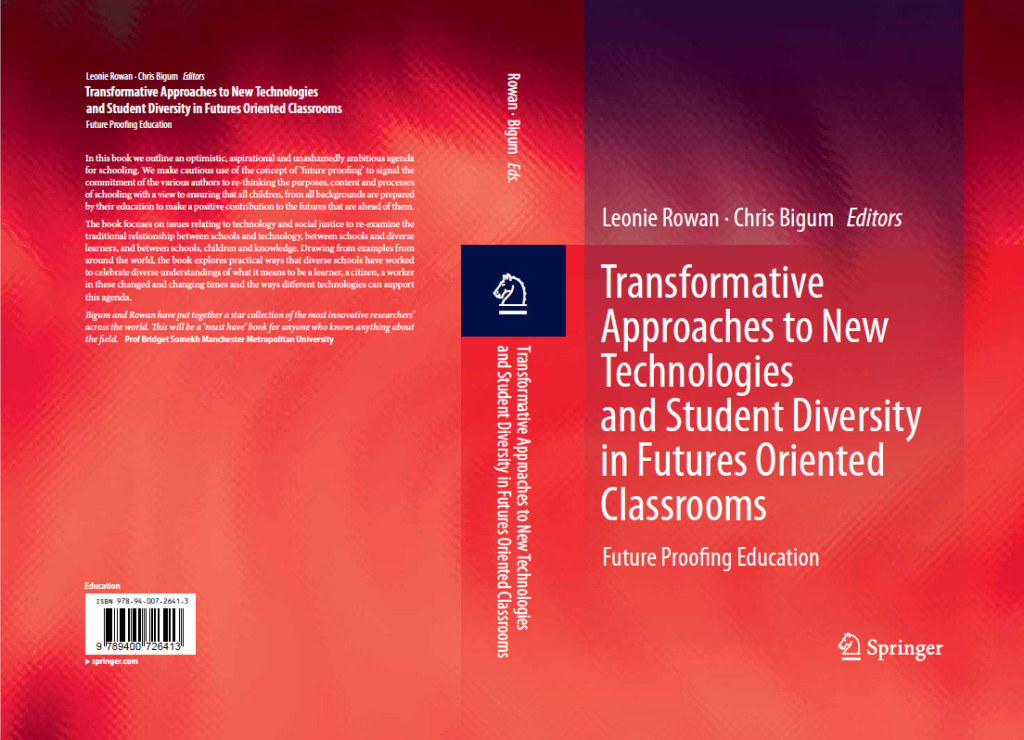Feels good to see this described as a “must have book” and to know that the classroom use of SOLO Taxonomy as a practical approach to rethinking futures oriented classrooms features in Chapter 8 – see extract from introduction below.
“Bigum and Rowan have put together a star collection of the most innovative researchers across the world. This will be a ‘must have’ book for anyone who knows anything about the field.” Prof Bridget Somekh Manchester Metropolitan University
In this book we outline an optimistic, aspirational and unashamedly ambitious agenda for schooling. We make cautious use of the concept of ‘future proofing’ to signal the commitment of the various authors to re-thinking the purposes, content and processes of schooling with a view to ensuring that all children, from all backgrounds are prepared by their education to make a positive contribution to the futures that are ahead of them.
The book focuses on issues relating to technology and social justice to re-examine the traditional relationship between schools and technology, between schools and diverse learners, and between schools, children and knowledge. Drawing from examples from around the world, the book explores practical ways that diverse schools have worked to celebrate diverse understandings of what it means to be a learner, a citizen, a worker in these changed and changing times and the ways different technologies can support this agenda.
Chapter 8. Teaching and learning: Tales from the ampersand.
Pam Hook
Introduction
Whilst the terms teaching and learning are almost routinely joined together in educational debates, there are questions that can be raised about the extent to which learning outcomes are a genuine focus within these discussions. The task
of trying to meet the needs of diverse students is challenging; it is easier to offer simple technology-based solutions and neglect the broader issues around pedagogy. The Differentiated Curriculum Model (DCM) explored in this paper is
focused on learning outcomes through the use of The Structure of the Observed Learning Outcome (SOLO) Taxonomy, and is an attempt to address the needs of diverse students in technologically mediated environments whilst keeping a focus
on pedagogy. SOLO is a model of learning that makes learning outcomes visible to all regardless of age, gender, culture or socio-economic background. The DCM is used in New Zealand to provide diverse students with an explicit common language for learning outcomes, for self-assessment and peer-assessment.





